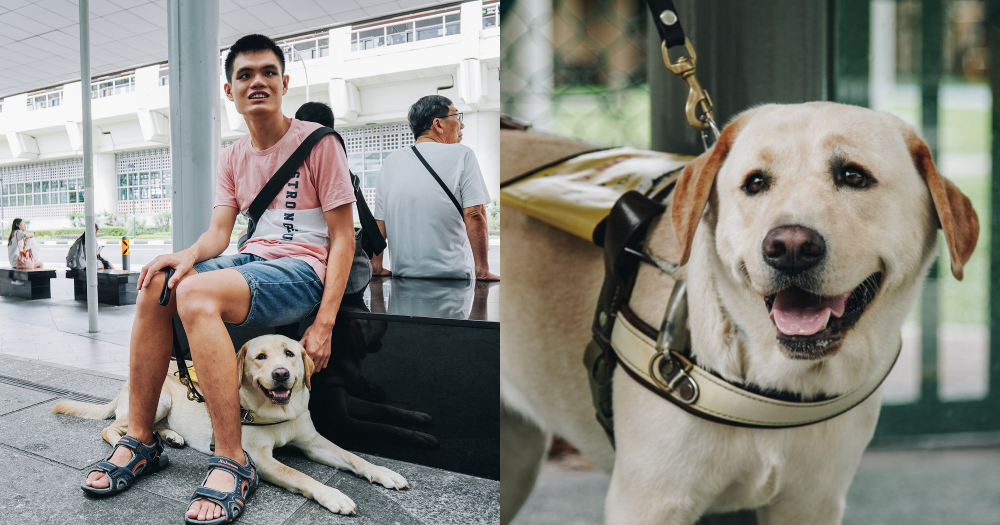Like most dog owners, Chia Hong Sen would bring Clare, his four-year-old dog, to the grass patch near his HDB apartment for her quick toilet break.
Instead of following Chia's orders of doing a "quicks, quicks", which Clare understands to mean defecate, the canine started inching towards me, a complete stranger she has never met.
Approaching me with her inquisitive wide eyes and wet sniffing nose, Clare had the energy and curiosity of most young dogs.
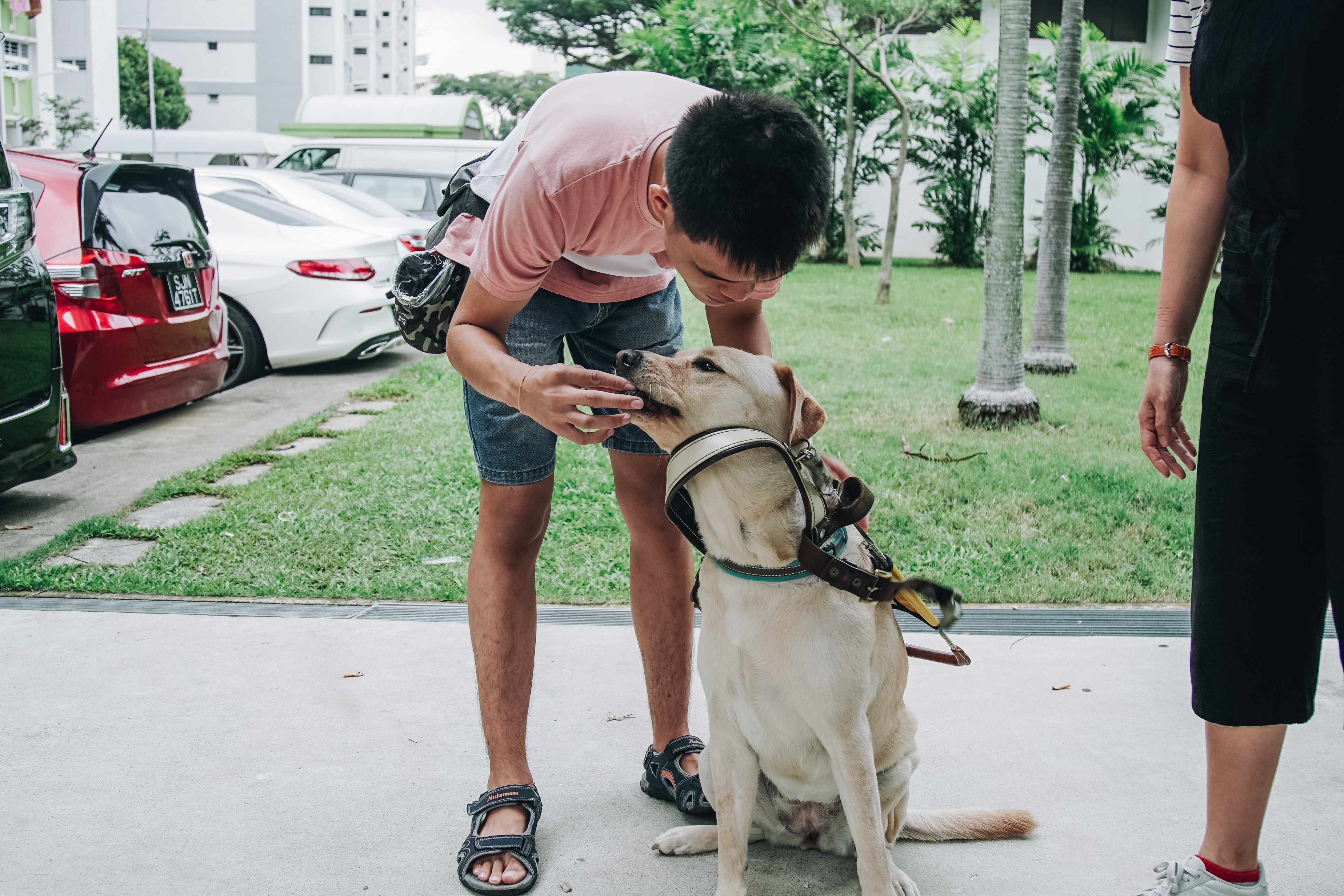 Chia putting on Clare's harness. Photo by Rachel Ng.
Chia putting on Clare's harness. Photo by Rachel Ng.
After she was finally done with her business, Chia put on a working harness over her neck and she immediately perked up, giving her utmost attention to him.
She is now ready to go on duty as Chia's trusted guide dog.
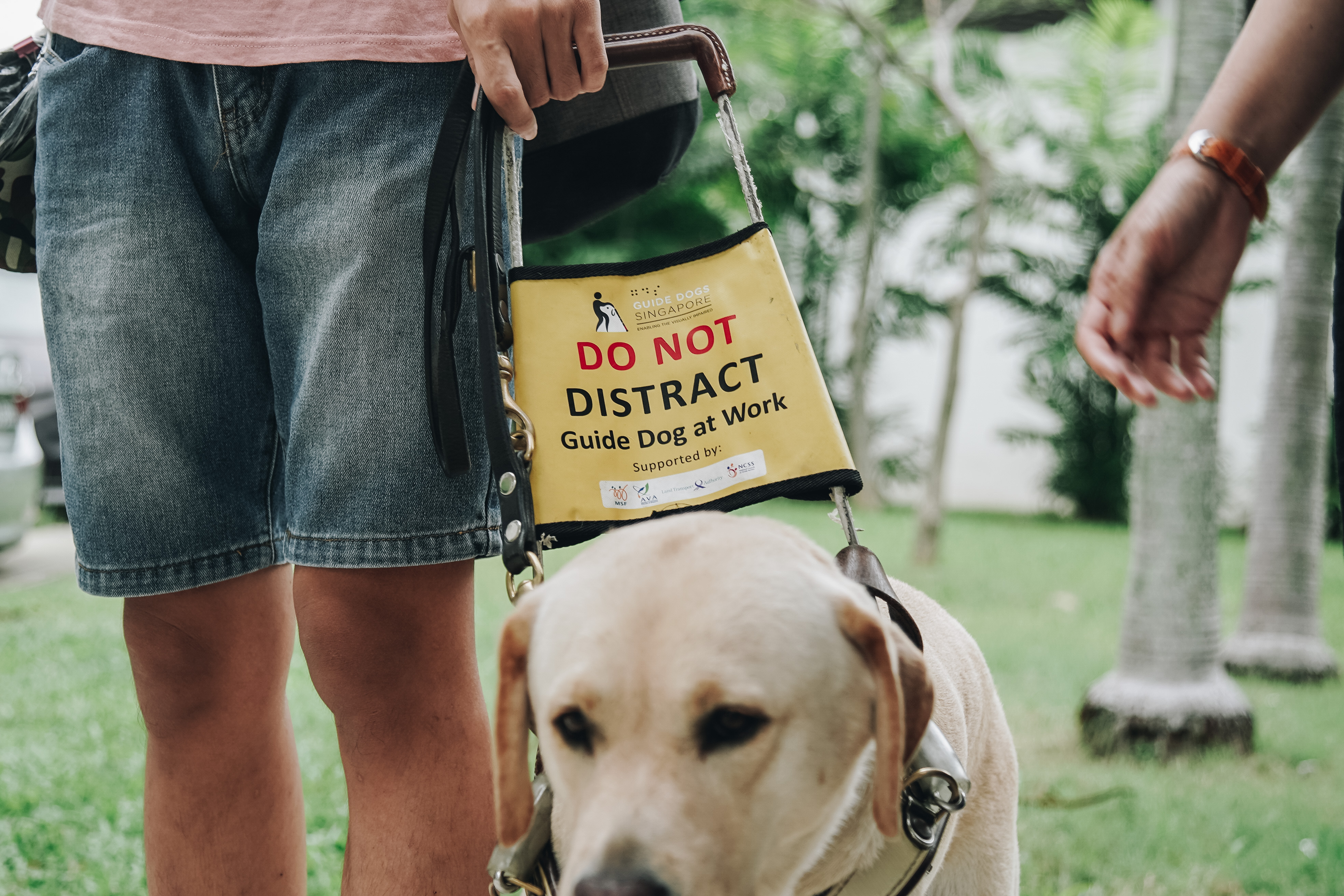 This sign lets people around Chia know not to pet Clare when she is working. Photo by Rachel Ng.
This sign lets people around Chia know not to pet Clare when she is working. Photo by Rachel Ng.
Born with retinal dystrophy
As soon as Clare had her working harness on, the guide dog team (a term that addresses both the guide dog and its handler) made their way to the bus stop, where they would then take the bus to Bedok Interchange Hawker Centre.
After Clare and Chia led us to the bus stop and managed to find out when the next bus was coming through an app on his phone, I finally had time to break the ice and get to know Chia a little more.
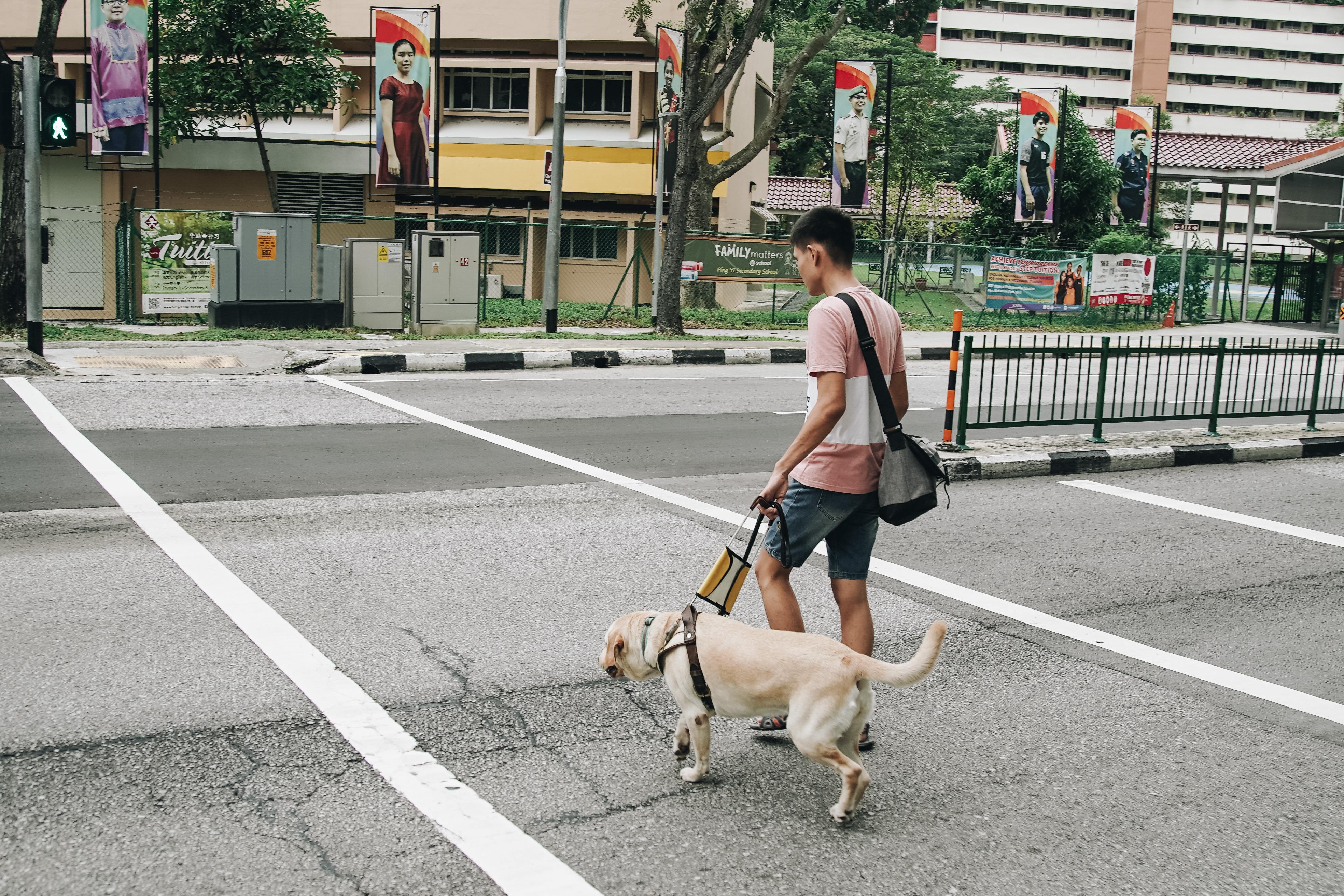 Chia and Clare crossing the road to get to the bus stop. Photo by Rachel Ng.
Chia and Clare crossing the road to get to the bus stop. Photo by Rachel Ng.
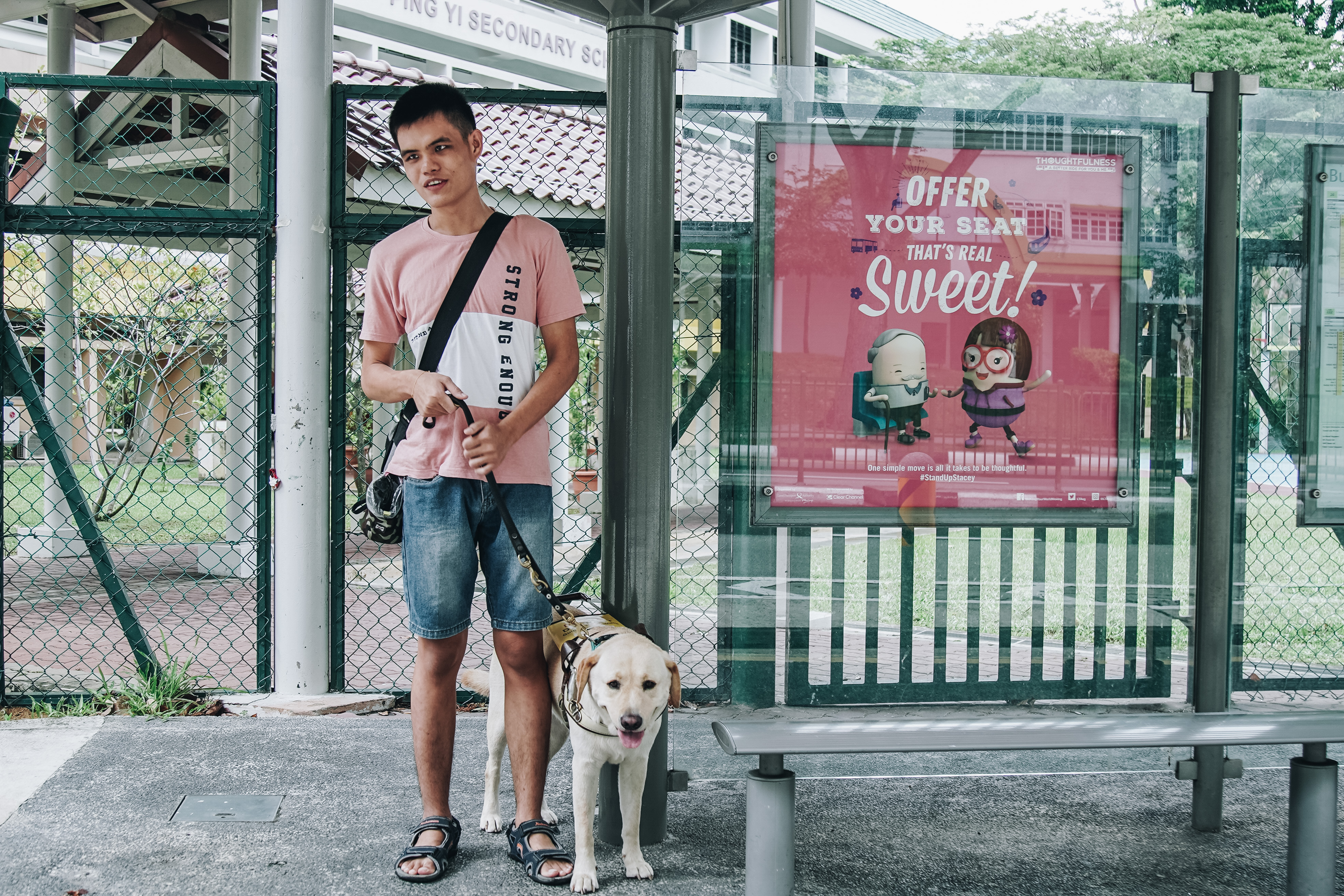 Chia and Clare at the bus stop. Photo by Rachel Ng.
Chia and Clare at the bus stop. Photo by Rachel Ng.
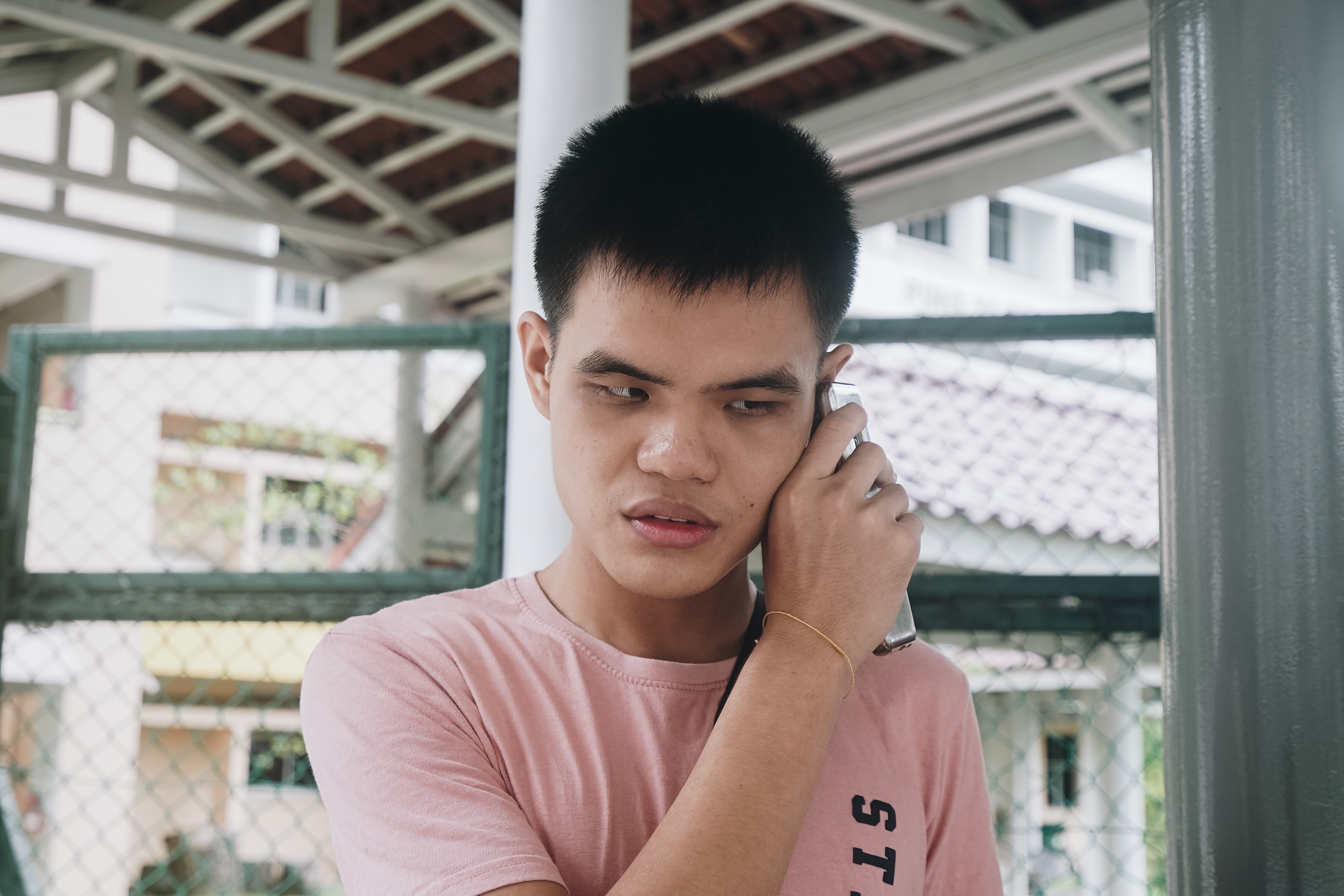 Chia using his phone to listen to the directions on his phone. Photo by Rachel Ng.
Chia using his phone to listen to the directions on his phone. Photo by Rachel Ng.
23-year-old Chia was born with retinal dystrophy, a chronic and progressive disorder of the visual function.
As a visually impaired person, he can perceive only light and shadow, and differentiates colours to a limited extent.
Tries to live a normal life
Despite his condition, Chia has been independent since he was young — a trait he believes one has to live out instead of learning.
He learnt how to read Braille at the age of five, knows how to use the white cane and is fairly familiar with his neighbourhood located on the east side of Singapore.
Being visually impaired is not an excuse for him to not try to live as normally as he can.
In fact, just like most people his age, Chia is now in his final year of university, pursuing a degree in management and digital innovation.
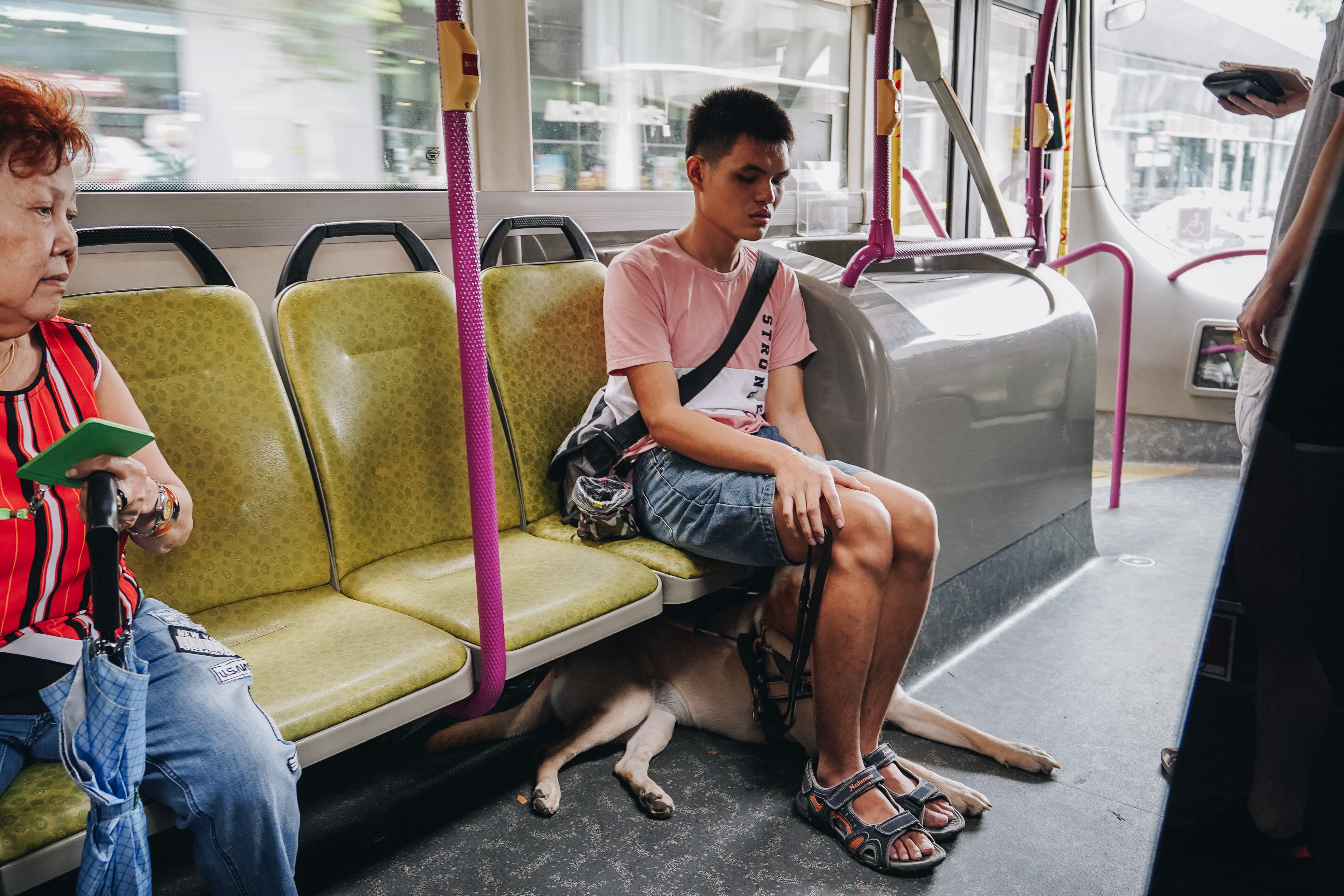 Chia and Clare on the bus. Photo by Rachel Ng.
Chia and Clare on the bus. Photo by Rachel Ng.
Behaves like kiasu auntie
Upon another instruction given by Chia, Clare guided him up the bus and was greeted with a lot of stares from the other passengers aboard.
Much like a kiasu auntie, Clare immediately walked towards an empty priority seat and pointed her snout towards it.
After Chia took his seat, she went on to sit beneath the seat so she wouldn't block the path.
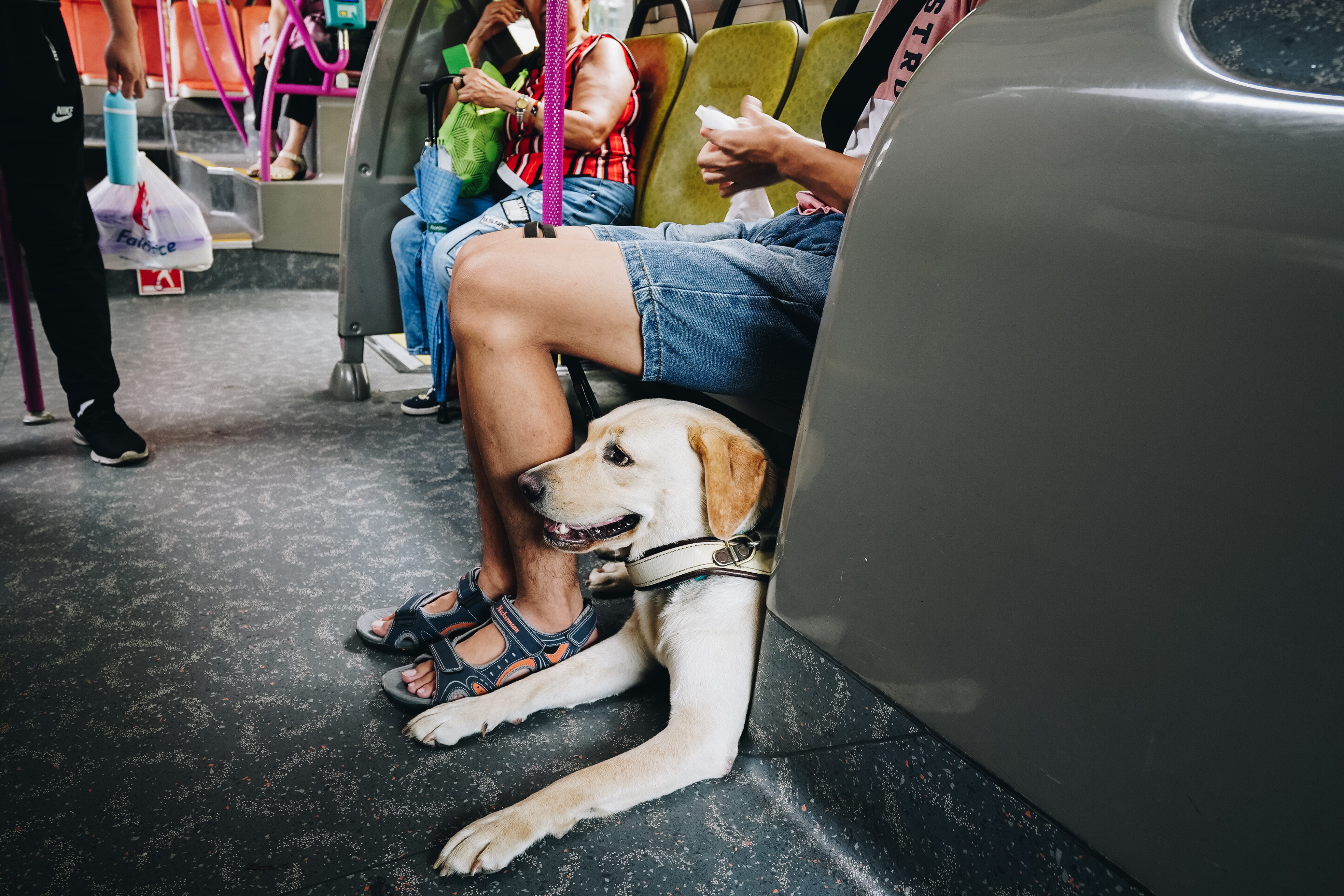 Clare on the bus. Photo by Rachel Ng.
Clare on the bus. Photo by Rachel Ng.
But what happens if the bus is crowded?
Laughing out of slight embarrassment, he shared:
"She will continue to point her snout towards the priority seat and most times, maybe because it makes them awkward, people will give up their seat to me. Other times, I will just bring Clare to stand aside so we won't get in the way of others."
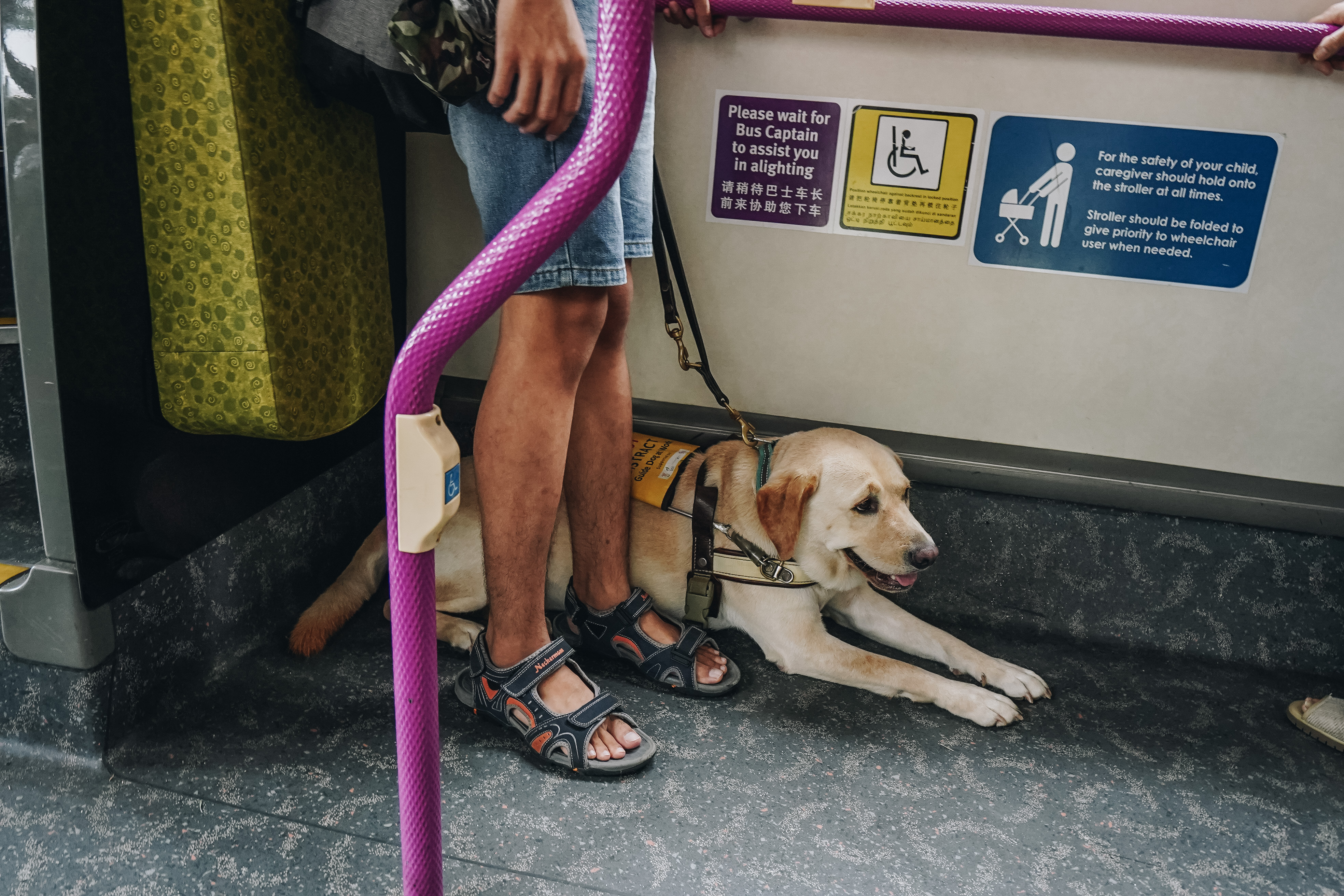 Photo by Rachel Ng.
Photo by Rachel Ng.
Guide dog costs S$50,000
A few bus stops later, we alighted from the bus stop and Chia brought us to the bustling and crowded hawker centre, where we sat to have tea while continuing with the interview.
In 2016, he was recommended by a doctor to get a guide dog in a bid to enhance his quality of life.
Heeding his doctor's recommendation, Chia approached Guide Dogs Singapore (GDS), a non-profit organisation that went on to assess and pair him with a suitable guide dog.
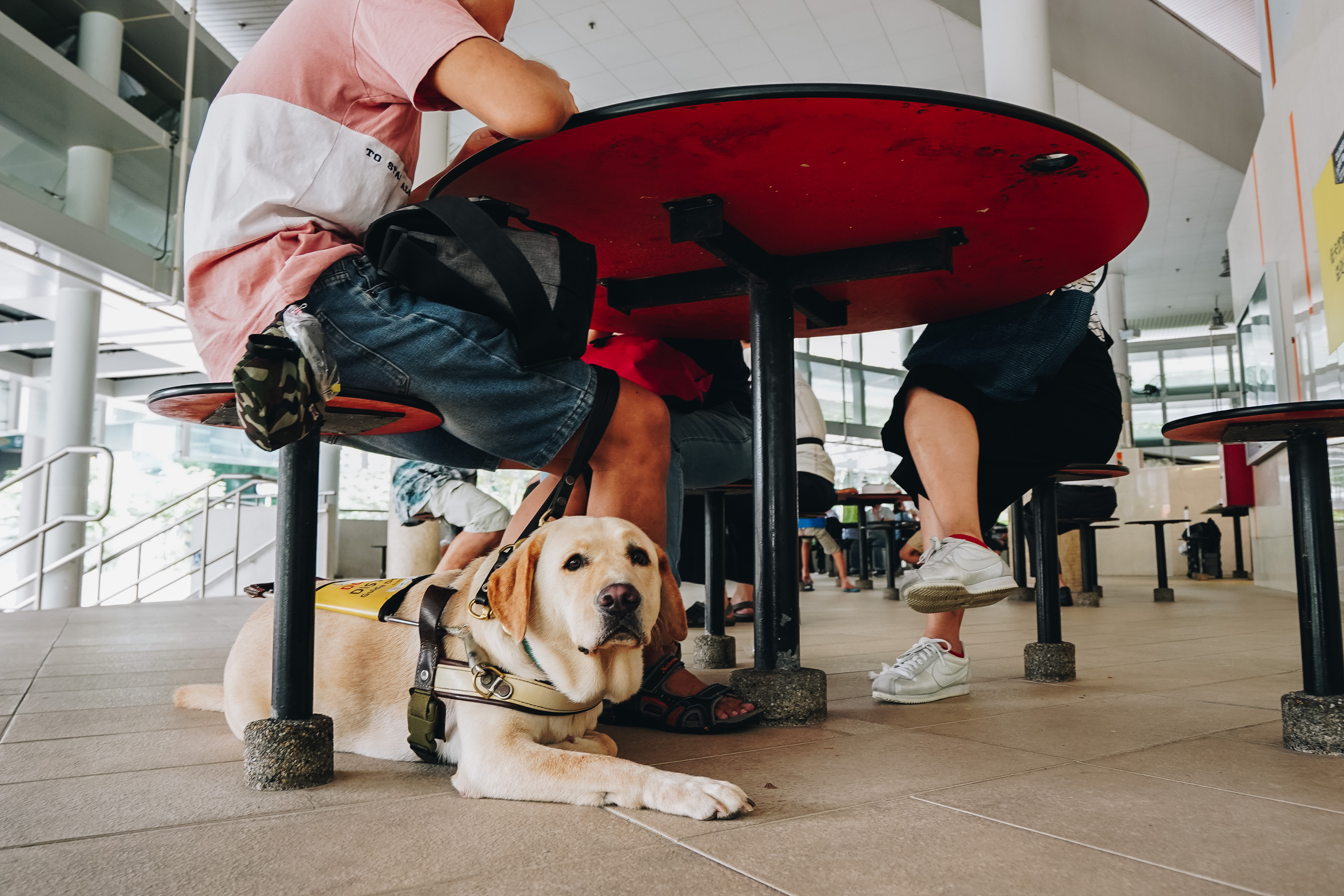 Clare at the hawker centre. Photo by Rachel Ng.
Clare at the hawker centre. Photo by Rachel Ng.
The procurement and training of a guide dog, which costs around S$50,000, is fully sponsored by GDS.
However, the process isn't as easy as it sounds.
In order to be eligible for a guide dog, there are several criteria that the client has to meet, including the following:
- Committed to use and care for the dog and be the primary caregiver in order to bond with the dog.
- Give the dog sufficient workload as it is a working service animal, not a pet.
- Understand that the dog does not solve all his travelling problems and he has to give instructions/direction at appropriate times.
- Ability to travel independently by using the cane first and having good mental mapping skills.
Bonding with Clare takes time
In Chia's case, he was finally paired with Clare a year later in 2017.
According to him, it took close to three weeks for him to be sufficiently knowledgable about a guide dog.
"I learned skills like grooming, feeding and walking the dog. Generally, I just had to know how to take care of her as the main caregiver."
Of course, there was bound to be some hiccups in the training sessions that Chia had to go through with Clare.
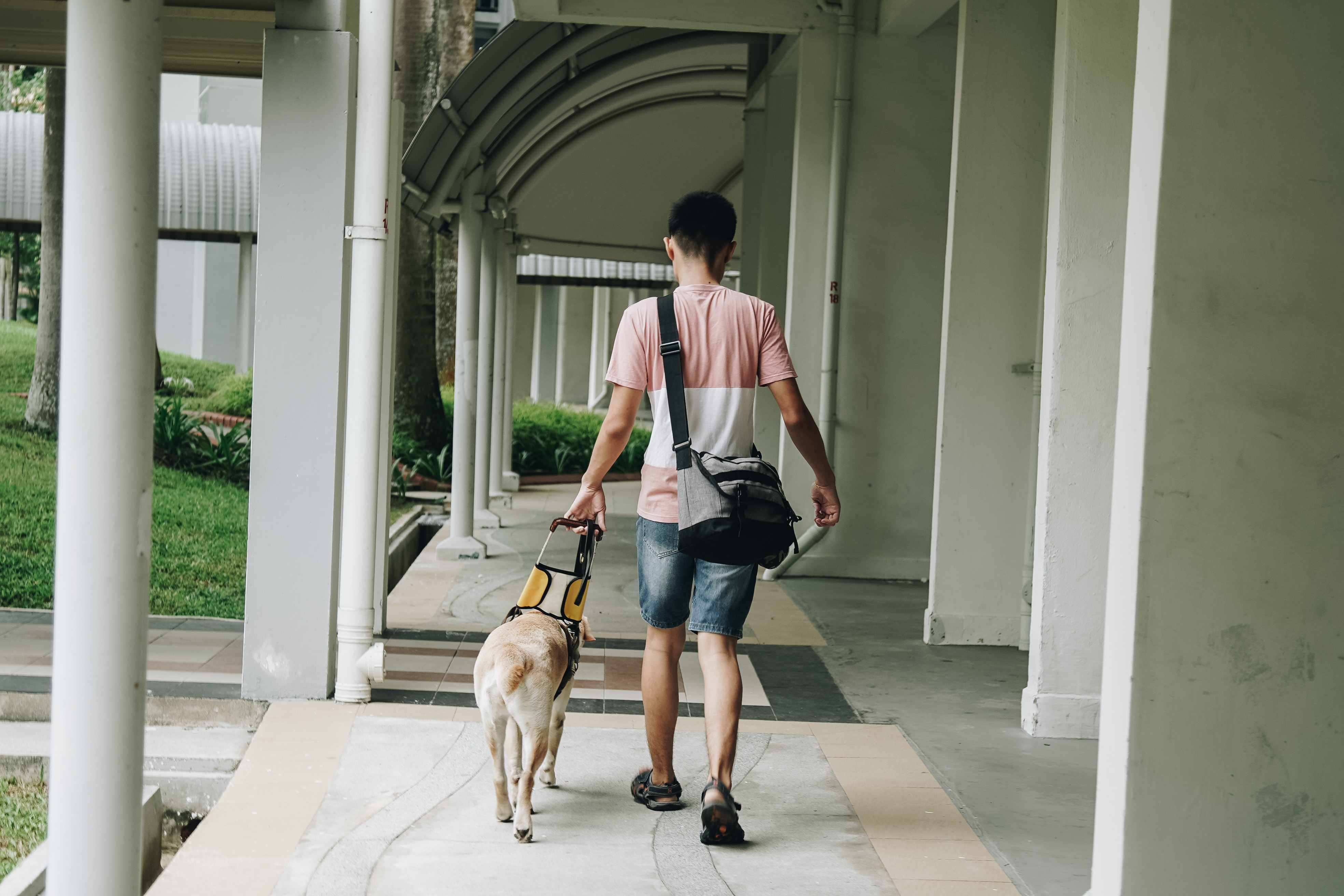 Photo by Rachel Ng.
Photo by Rachel Ng.
For example, in the first few weeks that he had Clare, he would give her too much water, causing her to urinate more often than the scheduled five-times-a-day toilet breaks.
Now that the guide dog team has spent close to two years together, the partnership between the two is much stronger and Chia even recognises a few quirks of Clare.
For instance, he noticed that the gentle giant has an interest in community cats when she is off-duty.
Clare has also acquired a taste for diluted tea, which he would occasionally prepare for her.
A guide dog isn't a pet
Clare is a Labrador and Golden Retriever mix breed, an adorable sight that has made many fawn over her.
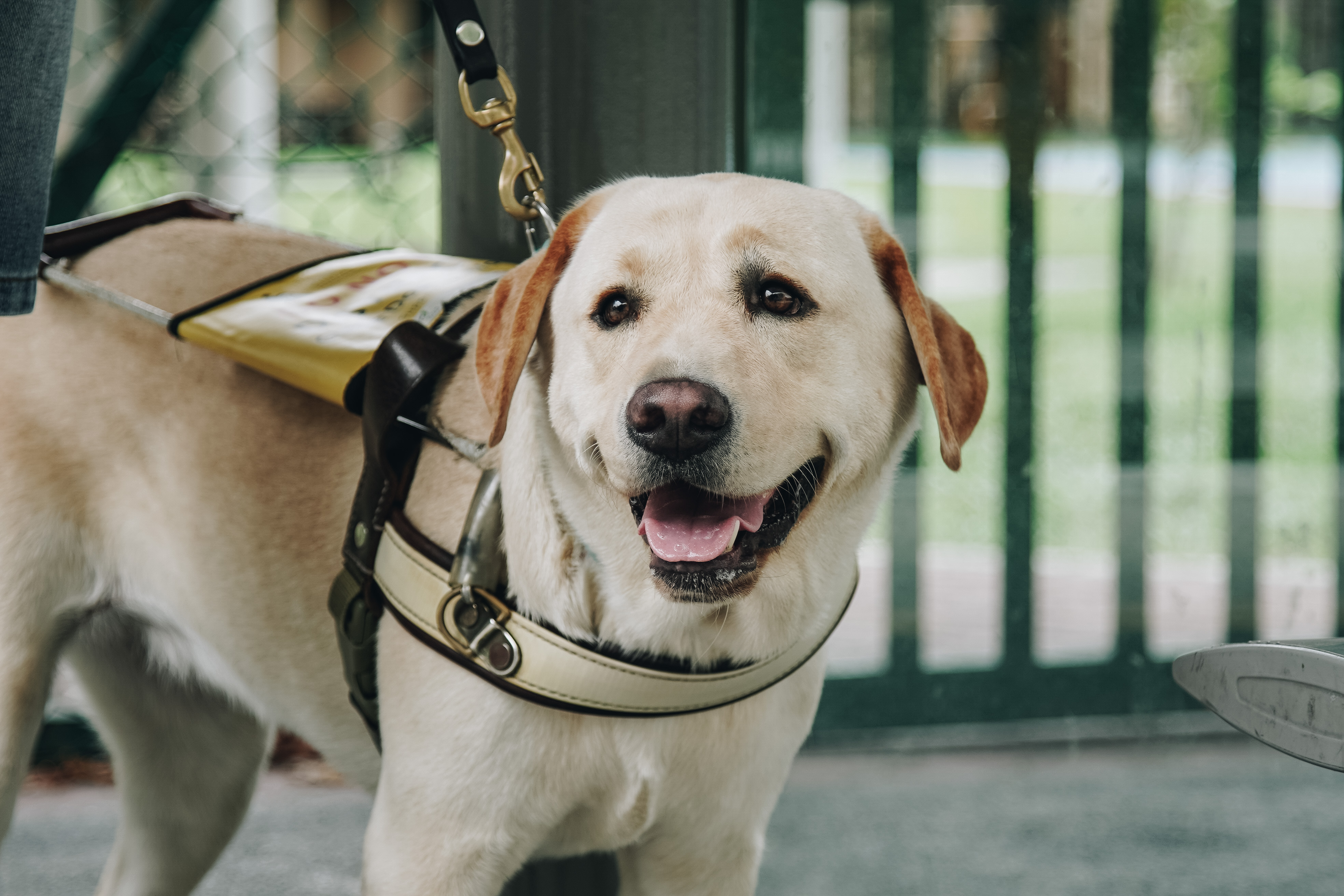 Photo by Rachel Ng.
Photo by Rachel Ng.
As a matter of fact, some passers-by have gone beyond cooing over how cute Clare is and would pet her even though she has her working harness on.
This would occasionally distract the dog and thus, deter them from performing their tasks.
"I can't see if strangers pet her, but it does happen sometimes. I'd gently tell them that she's working and petting her would distract her."
As a rule of thumb for those who are inexperienced with guide dogs, here's a list of things you should not do:
-
Give commands to the dog or attempt to steer it by its harness.
-
Allow children to tease or abuse the dog.
-
Walk on the guide dog’s left side as it may distract or confuse the dog.
-
Let other pets challenge or intimidate the Guide Dog.
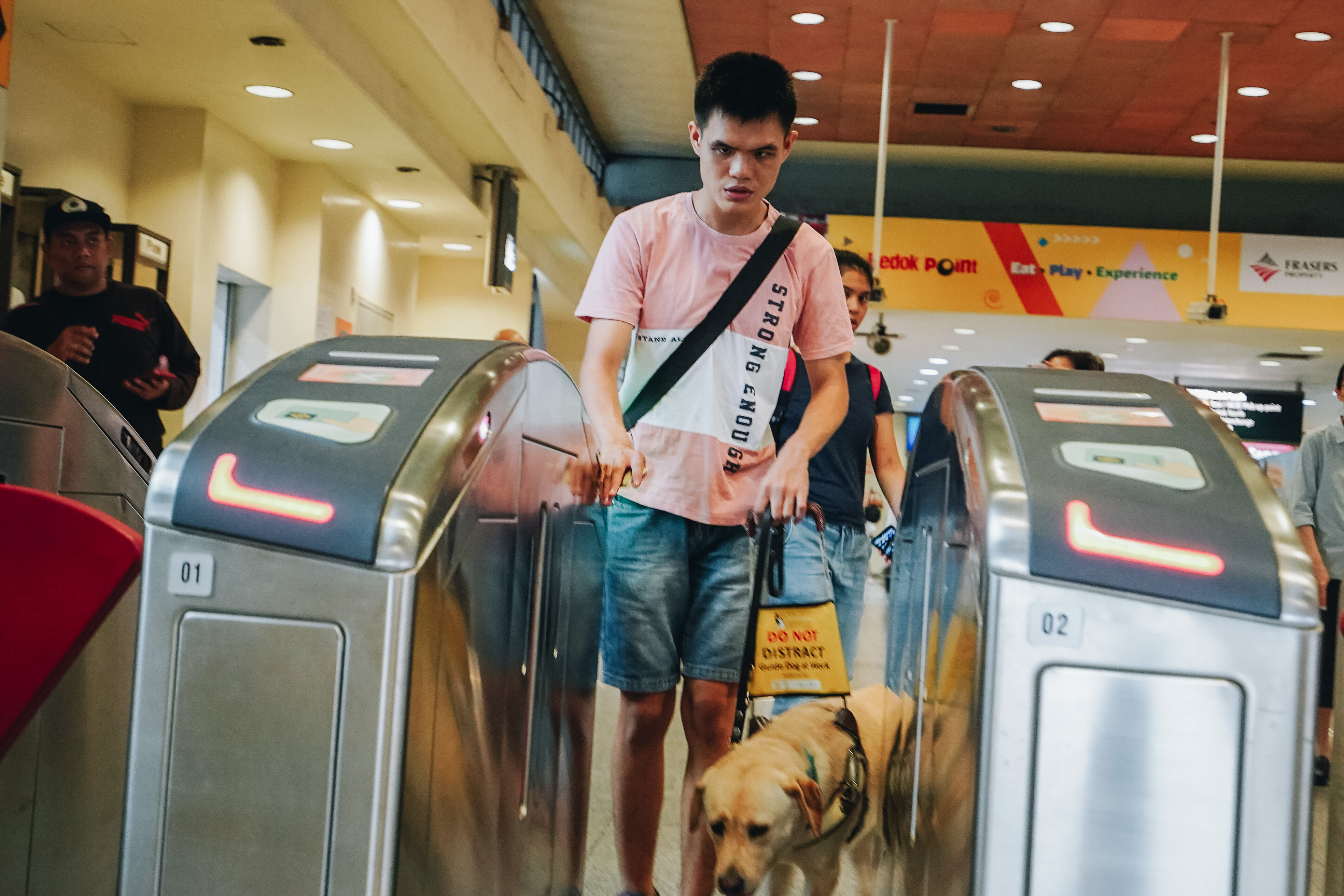 Passing through the MRT gantry. Photo by Rachel Ng.
Passing through the MRT gantry. Photo by Rachel Ng.
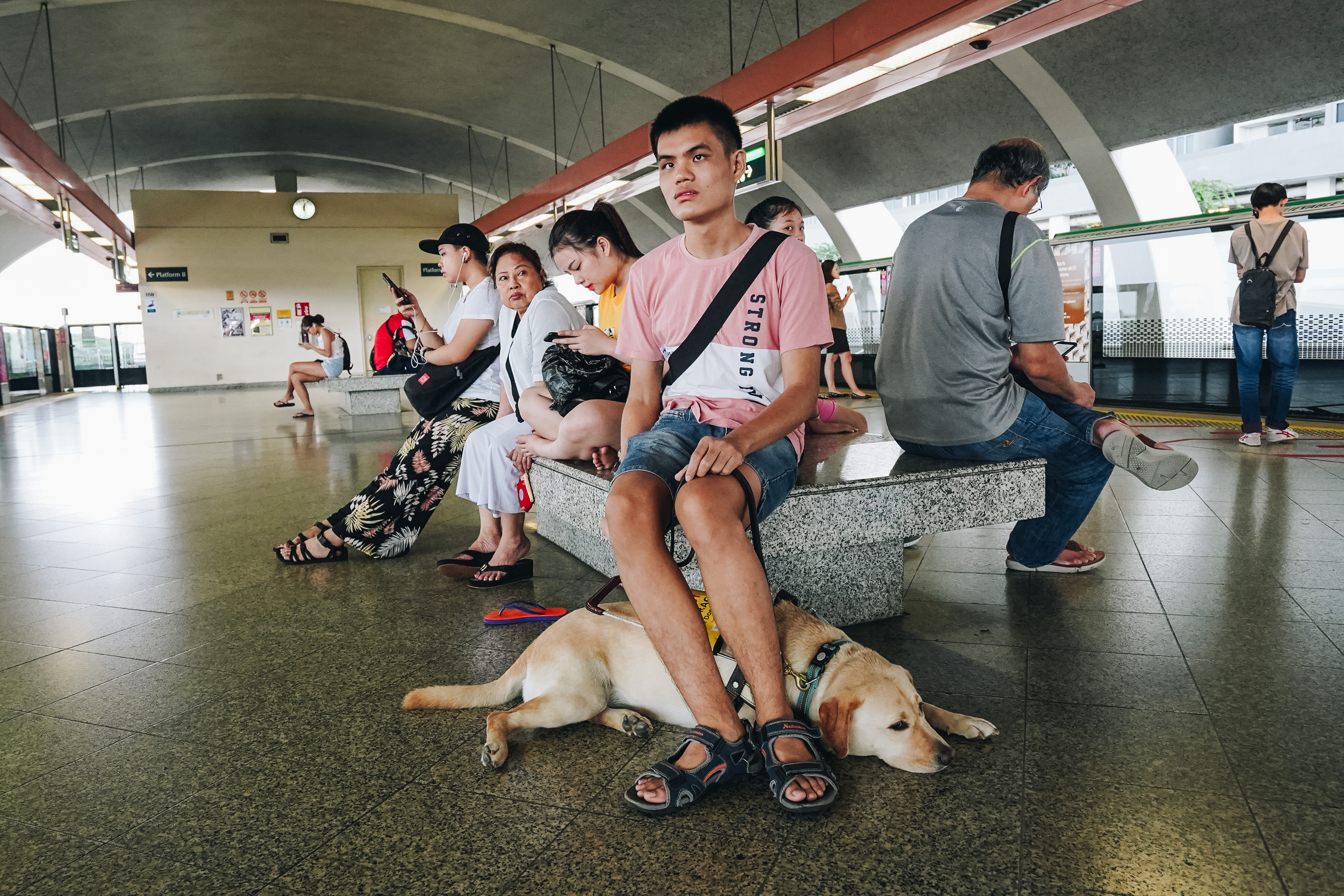 Waiting for the MRT. Photo by Rachel Ng.
Waiting for the MRT. Photo by Rachel Ng.
Shunned by KTV lounge
However, bringing Clare out isn't as easy as it sounds.
For one, despite the increased public awareness towards guide dogs, the guide dog team has been shunned from entering certain premises citing that pets aren't allowed in their premises.
And some establishments have gotten away with rather unreasonable explanations even though legally, guide dogs are allowed to enter food establishments, malls, and other public spaces like trains and buses.
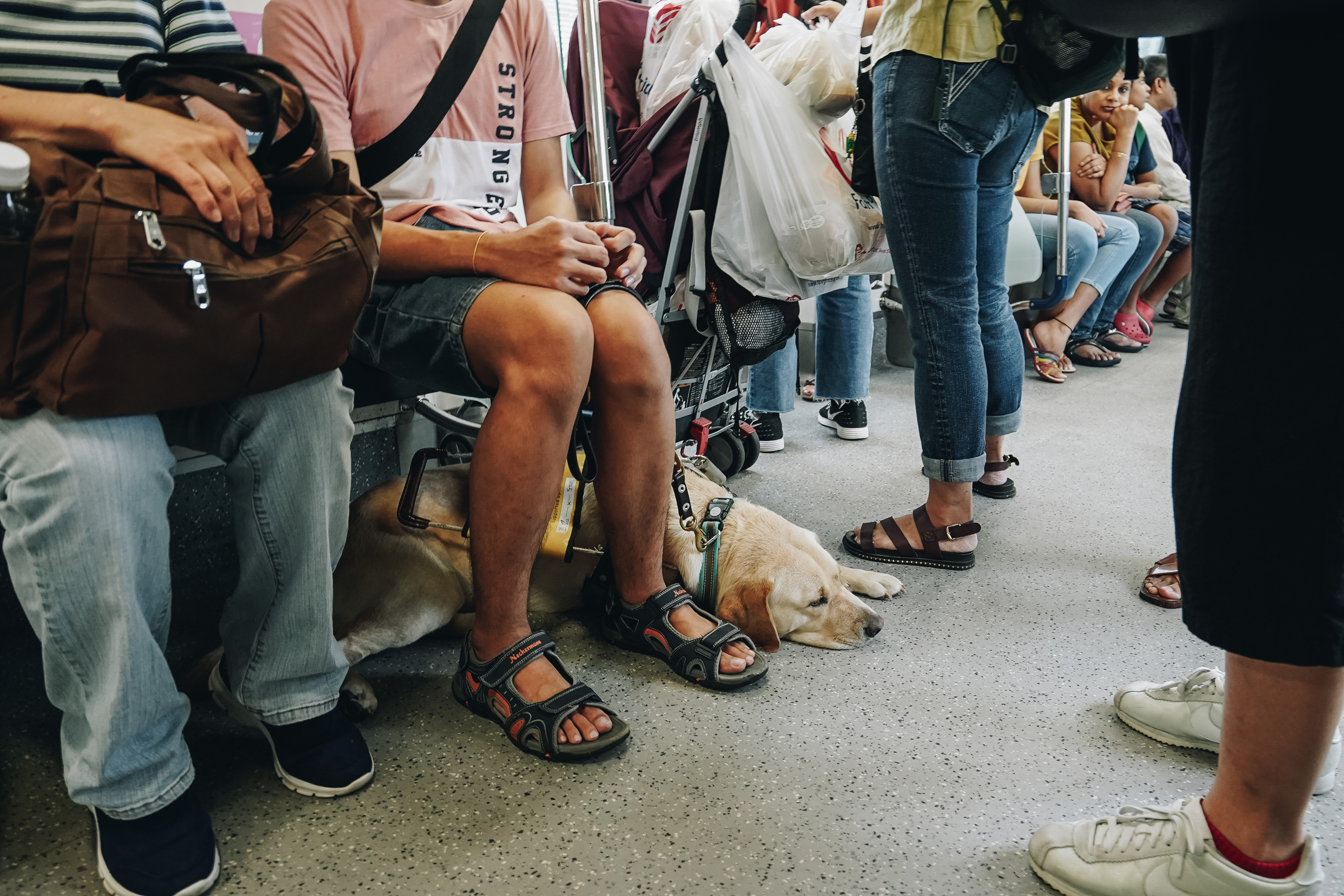 On the MRT train, quietly tucked under Chia. Photo by Rachel Ng.
On the MRT train, quietly tucked under Chia. Photo by Rachel Ng.
To put things into perspective, an experience Chia had with a local KTV lounge was especially infuriating.
"My friends and I wanted to go for karaoke, but they didn't let Clare in because they said she is a pet. I explained to them that Clare is a guide dog... She is a service animal, not a pet. They ended up telling me that since they serve beverages in the KTV, they didn't want her fur to get inside our drinks."
Thankfully, experiences like these are few and far between.
Instead, Clare has experienced more welcoming humans than obnoxious ones.
"Usually, we don't get stopped from entering places. A cafe I go to also offers to provide Clare a bowl of water sometimes."
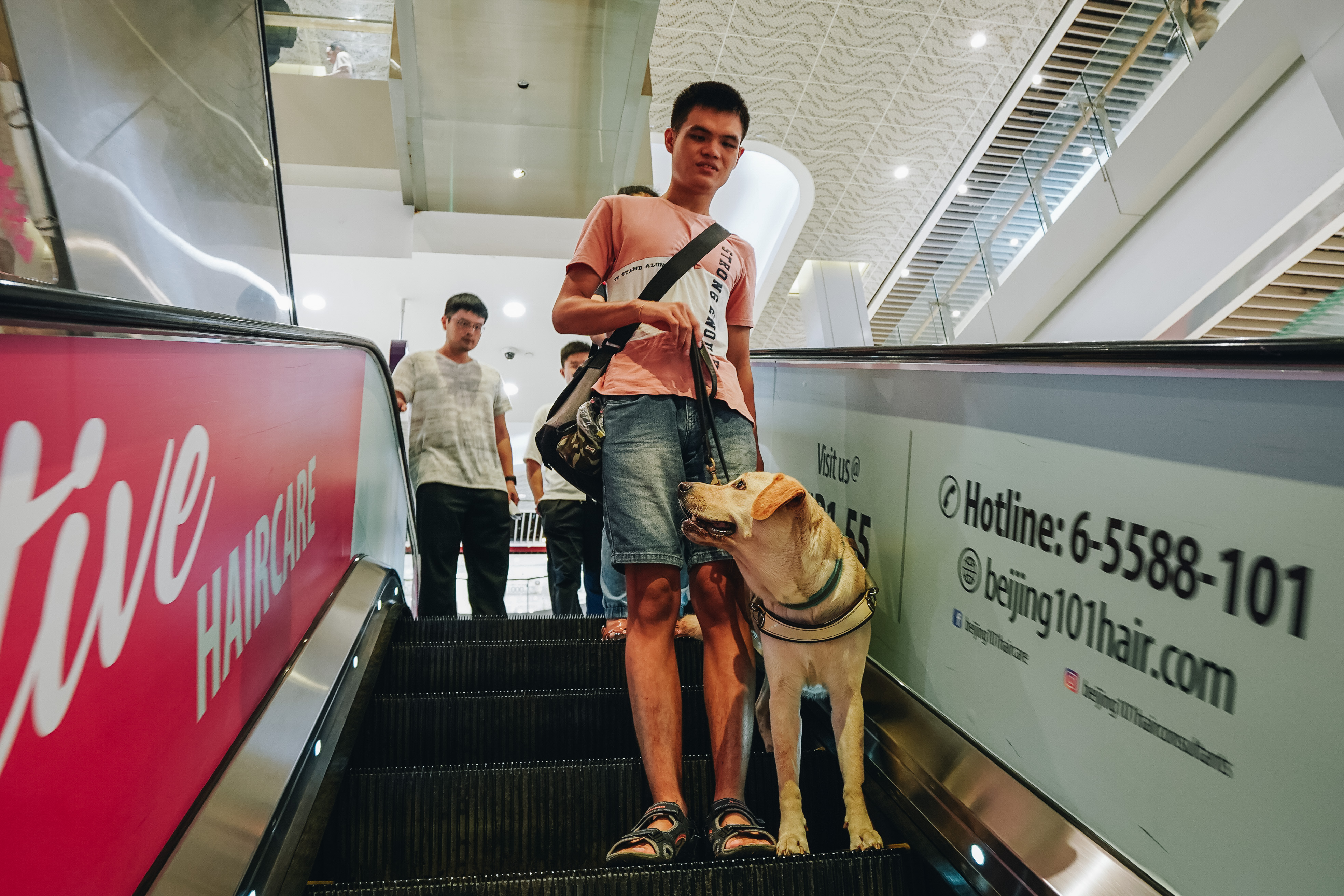 On the escalator in Bedok Mall. Photo by Rachel Ng.
On the escalator in Bedok Mall. Photo by Rachel Ng.
"Does she help to pick up your keys?"
While most people would think that Clare is the one taking care of Chia, he'd prefer to consider it more of a partnership.
"Clare is a guide, not a GPS. I can't tell her, 'Clare, go to school. Clare, go home.' I still have to give her some commands for tasks like finding the stairs or the MRT gantry."
But this is just one of the least absurd misconceptions about guide dogs that Chia has heard from strangers.
"Someone in the train was excited to see Clare and asked me if she helps me to do simple tasks like picking up the keys if I dropped it on the floor," Chia shared with a grin on his face.
He takes such comments in his stride, however, because at least he gets to do his part in educating the public about guide dogs.
Ignorance is bliss
We've been sitting at the hawker centre for close to 30 minutes and Chia is halfway done with his drink, yet the curious stares from passers-by never seemed to stop.
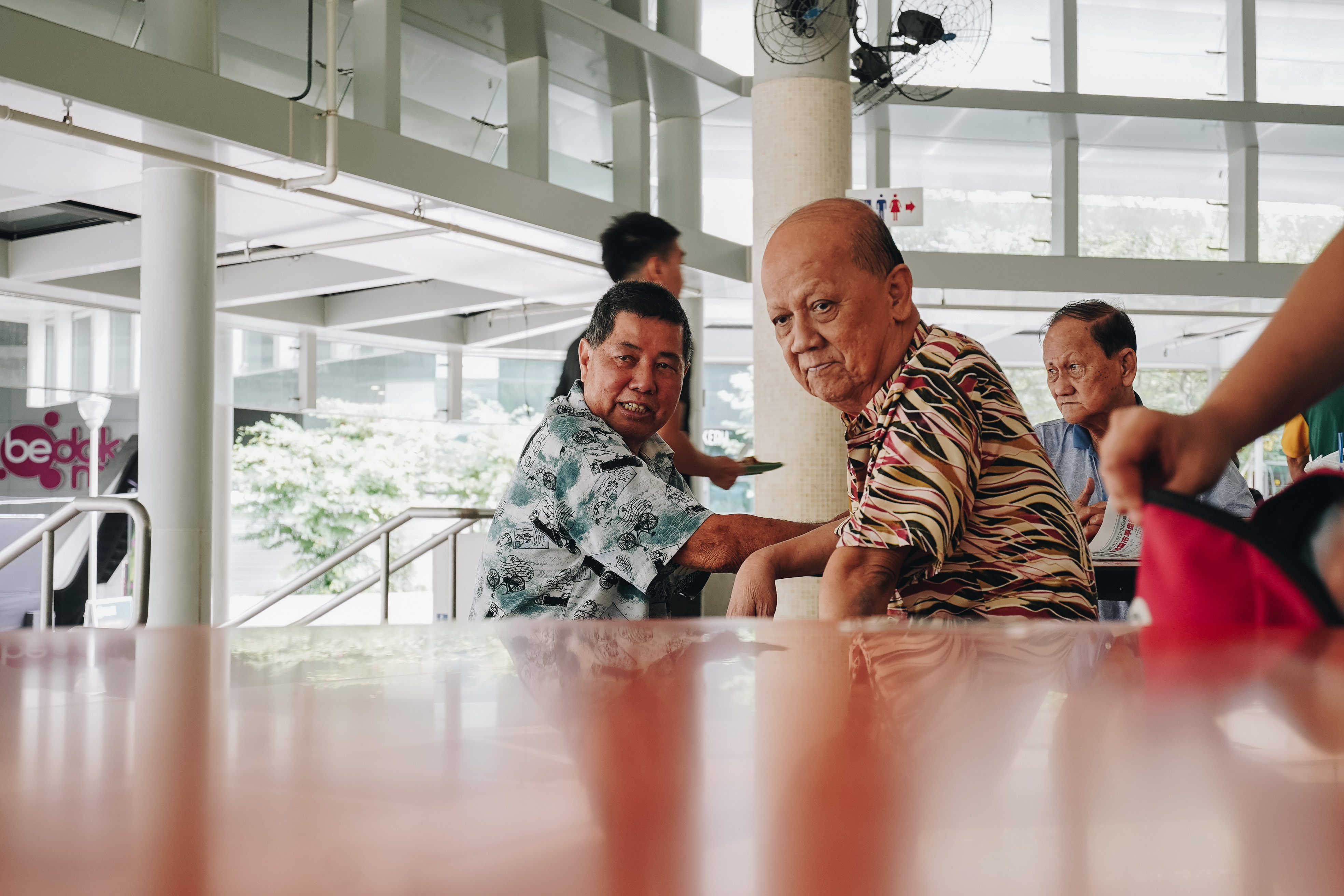 Random curious stares from uncles at the hawker centre. Photo by Rachel Ng.
Random curious stares from uncles at the hawker centre. Photo by Rachel Ng.
As it got a little too uncomfortable for me, I asked Chia if he felt the same way too.
"Ignorance is bliss. I can only see outlines and shadows, so the stares don't really bother me."
What ruffles his feathers a little is when, ahem, things like these happen:
Chia only found out about this article when someone from GDS messaged him the link to the article.
"The only thought that ran through my mind was: 'Who can it be? Let's hope it's not me.'"
This article, however, isn't the first time a photo of him unknowingly taken has circulated online.
In a bid to not offend anybody's feelings, he said:
"I don't want to say it's a irritating, but it does get frustrating at times. Would you take a photo of a person on a wheelchair and say, 'Wow, look it's so convenient, so cool.' I guess it's just not very nice."
While he hopes an incident like this doesn't happen again, he admits that it's not something that he can change.
"I think I have no choice, honestly. Hopefully it doesn't happen to me or any other guide dog teams for that matter, with the increasing awareness (towards guide dogs)."
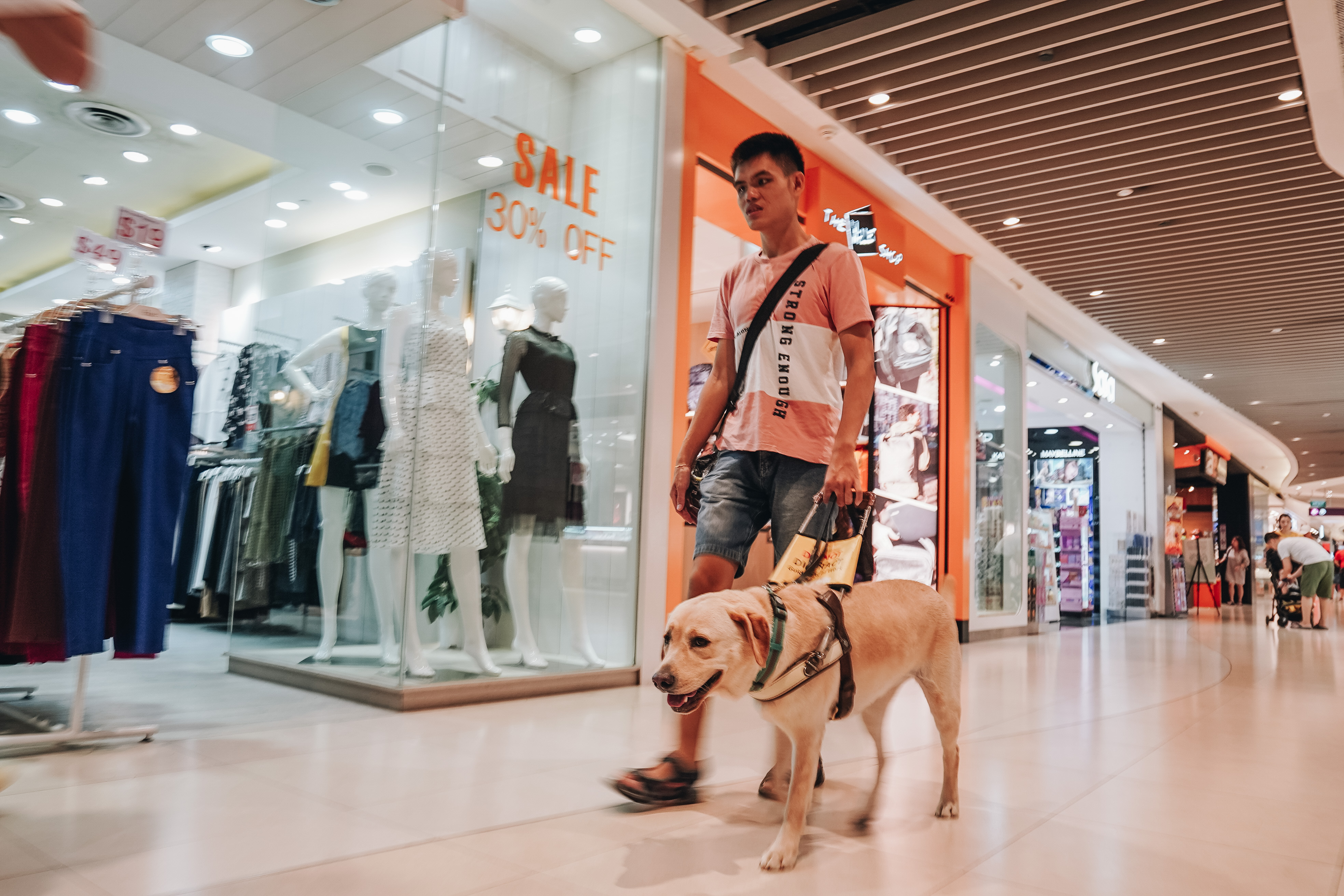 Taking a walk in Bedok Mall. Photo by Rachel Ng.
Taking a walk in Bedok Mall. Photo by Rachel Ng.
Caring for her in her golden years
We wrapped up our tea time and followed Chia to an NTUC Finest in Bedok Mall, a stone's throw away from the hawker centre.
Coincidentally, Clare's fourth birthday falls on the weekend and Chia has something planned for her.
"I'm going to cook a birthday meal for her. It's just going to be a simple celebration with the family."
I was told that a guide dog's career typically lasts for eight years.
After which, the dog would either return to GDS or the guide dog handler can choose to adopt it if they are able to continue to provide a conducive environment for the dog.
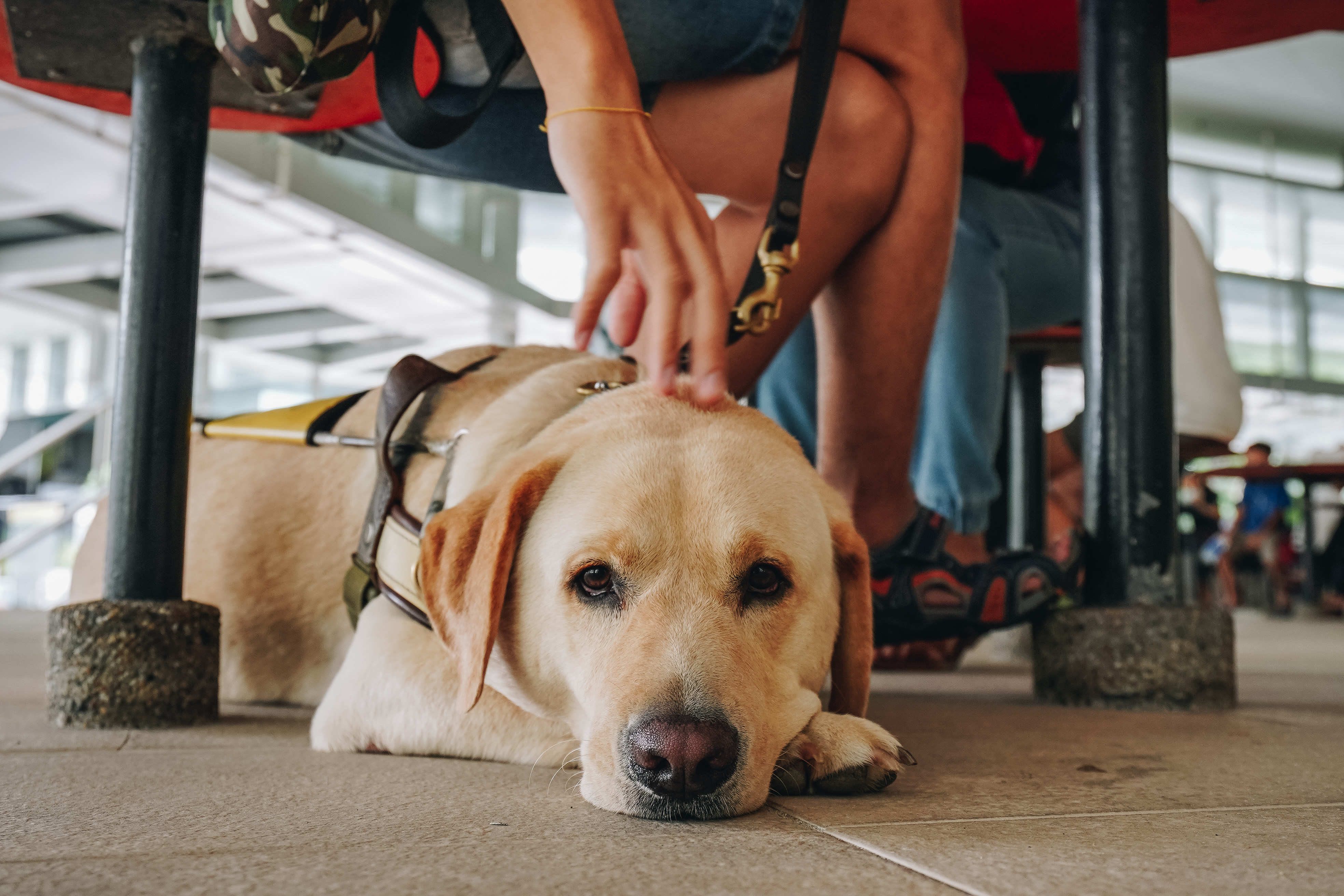 Chillin'. Photo by Rachel Ng.
Chillin'. Photo by Rachel Ng.
Intrigued by the choices, I asked Chia what he would do in six years' time.
He took a moment to think it through since it was the first time he was asked that question.
But after nodding his head, he confidently made the following decision:
"She deserves a good rest after helping me all this while. When the time comes, it's my turn to take care of her."
Top photo by Rachel Ng
If you like what you read, follow us on Facebook, Instagram, Twitter and Telegram to get the latest updates.
